These swords, currently produced and for sale online by the Ferrara Store (Italy), were spotted by alert Swordgate aficionado Hartman Krug (here are the pages for Sword 22 and Sword 23). The store doesn't ship to the U.S., so I imposed upon a relative in Germany to purchase them for us and then ship them overseas. You can thank Stephen Bridges for his willingness to conspire.
This was an expensive endeavor, draining $187 from the Woo War One war chest. It was money well spent.
I've only had time to take a quick glance at these, but I can tell you we are going to learn a lot from them. There are many features on the swords, and differences between them, that I think will move us a way down the road to unraveling the history and chronology of these things.
I'm not going to do any in-depth analysis in this post: I just wanted to throw some preliminary photos and make a couple of baseline observations up so we can start discussing these.
You'll notice right away that the Hercules figure on Sword 22 (the one with the pugio blade) is both larger and more detailed than the hilt figure on Sword 23. Without picking up a pair of calipers or doing a close side-by-side comparison, my initial off-the-cuff guess is that the Hercules on Sword 22 may be both larger and more detailed than the Hercules on the California sword. It certainly includes at least a few things we haven't seen before (such as dimples on the guard rivets). Although the blade is clearly not the same as that of Sword 21, the pugio shapes are a notable point of similarity. I'm wondering if the currently-produced Sword 22 isn't a design from a generation that pre-dates the California sword.
Sword 23 appears to be superficially very similar to the Design Toscano swords. The figures are about the same size and have a comparable lack of detail, and the blades are very similar (but not identical) in size and shape. My first guess is that Sword 23 and the Design Toscano swords (Sword 5 in the database) are closely related.
There will be more to come on these new swords. I've got Sword 22 on my 3D scanner right now and will make the model available as soon as I can get the data processed. In the meantime, here are some photos:
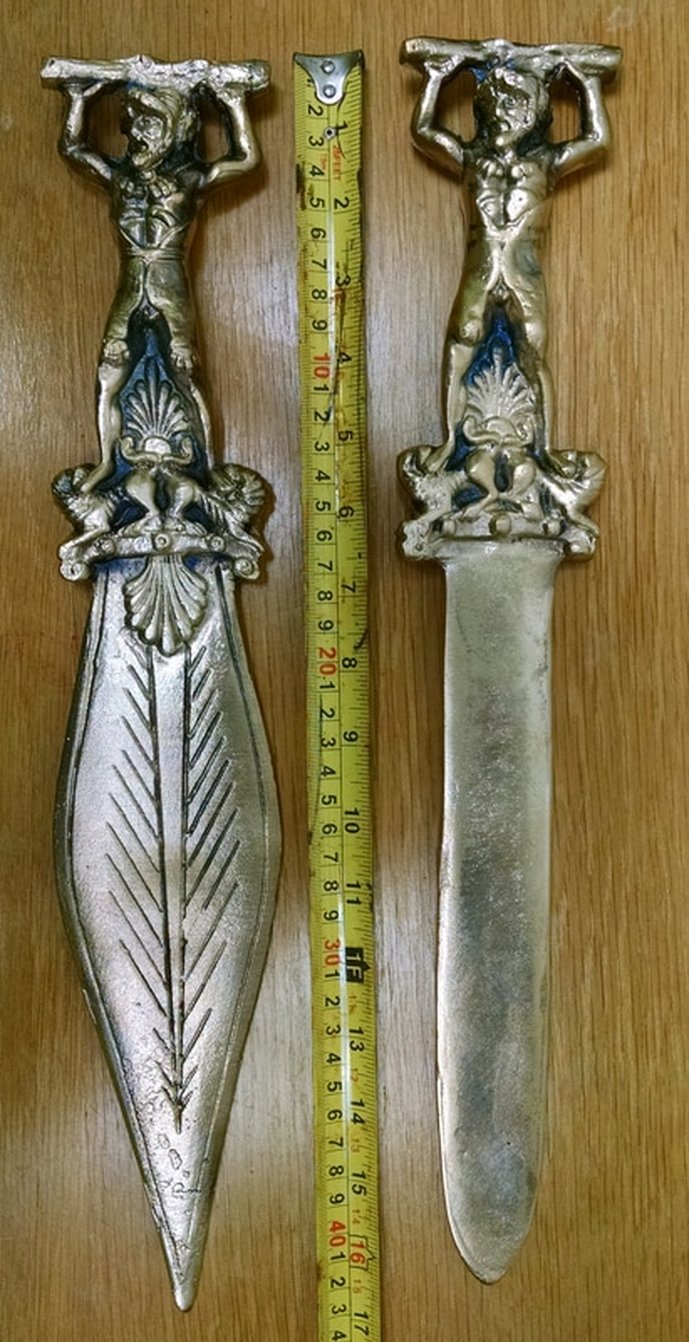
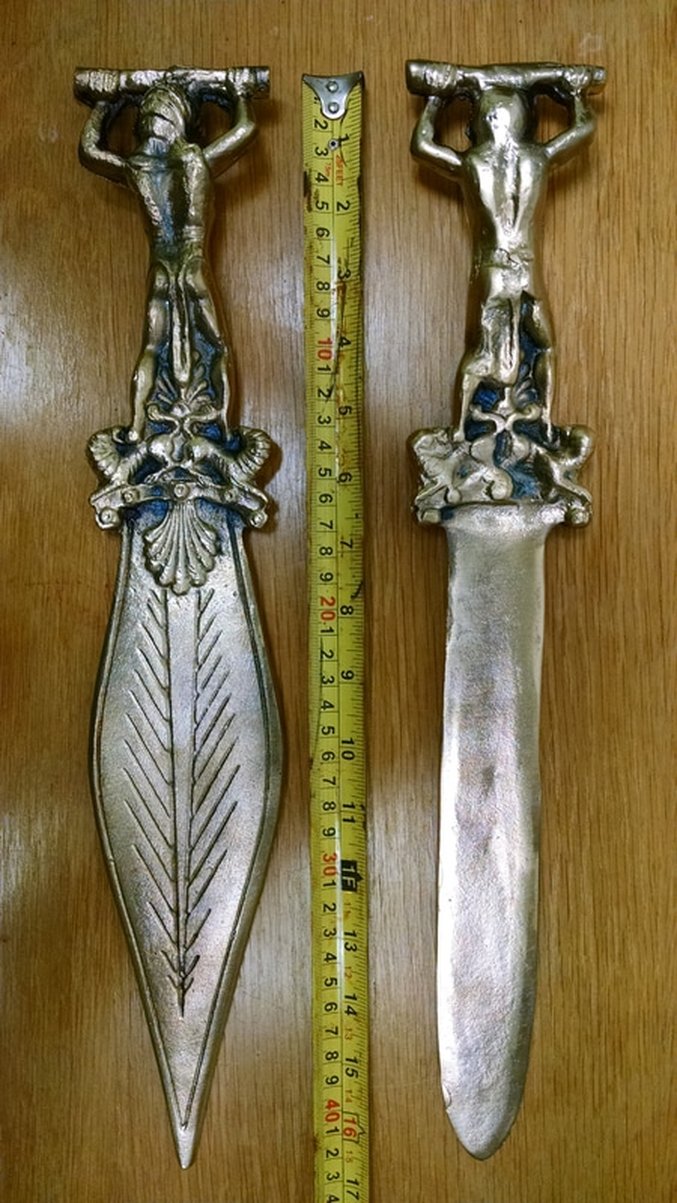
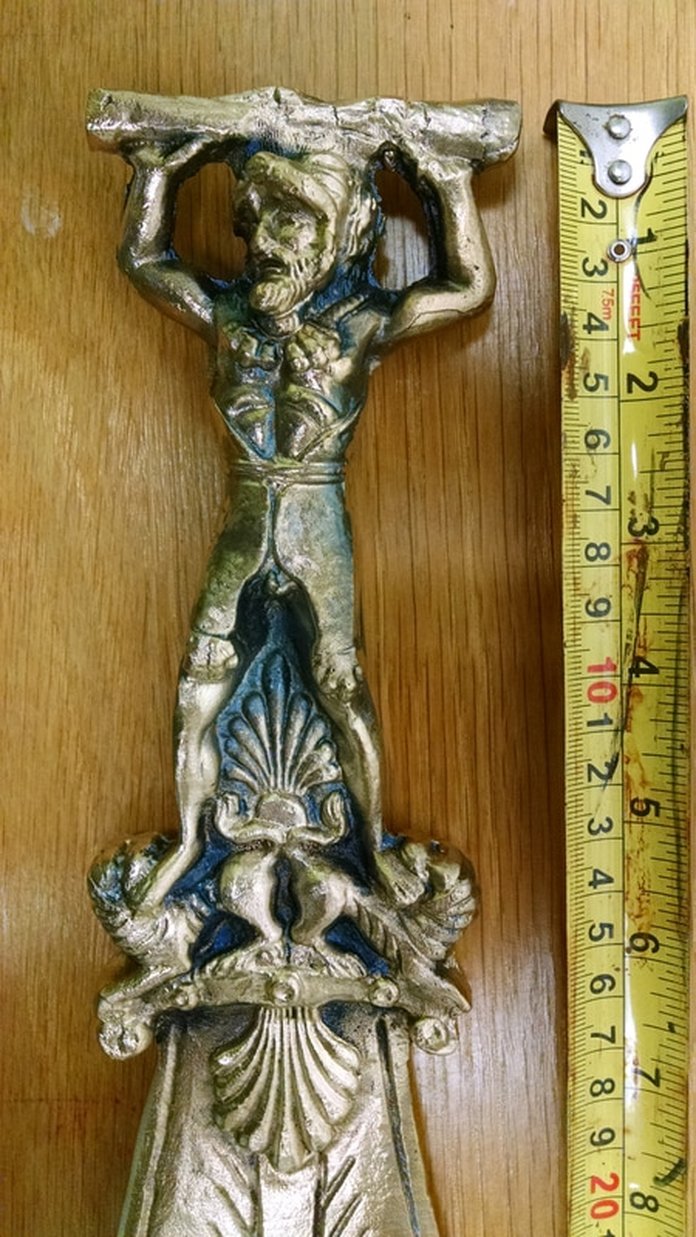
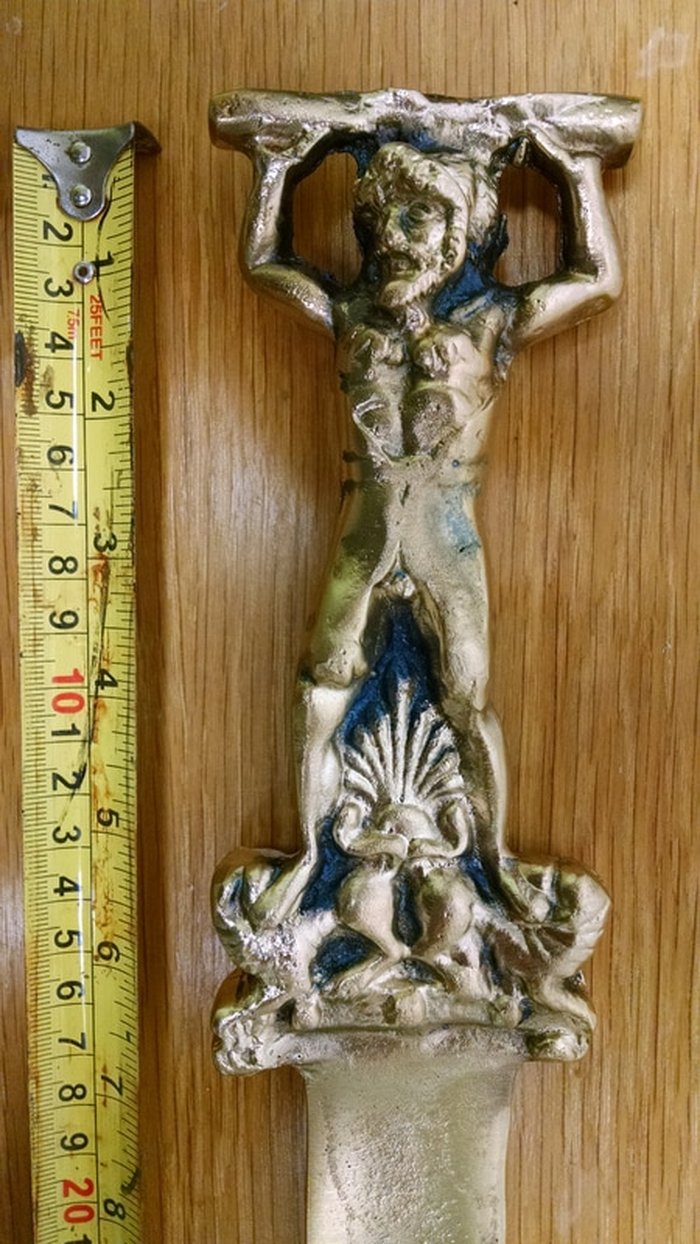
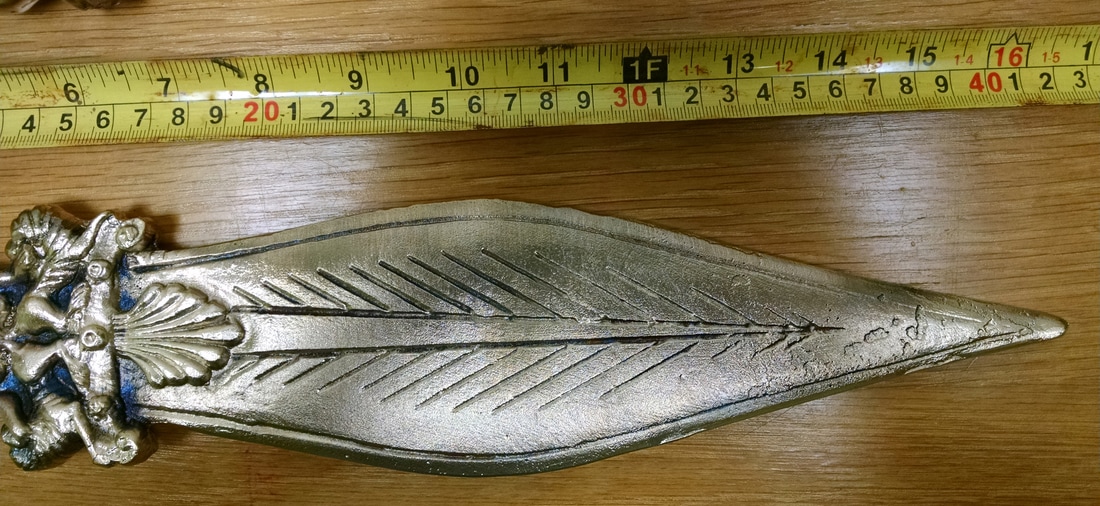
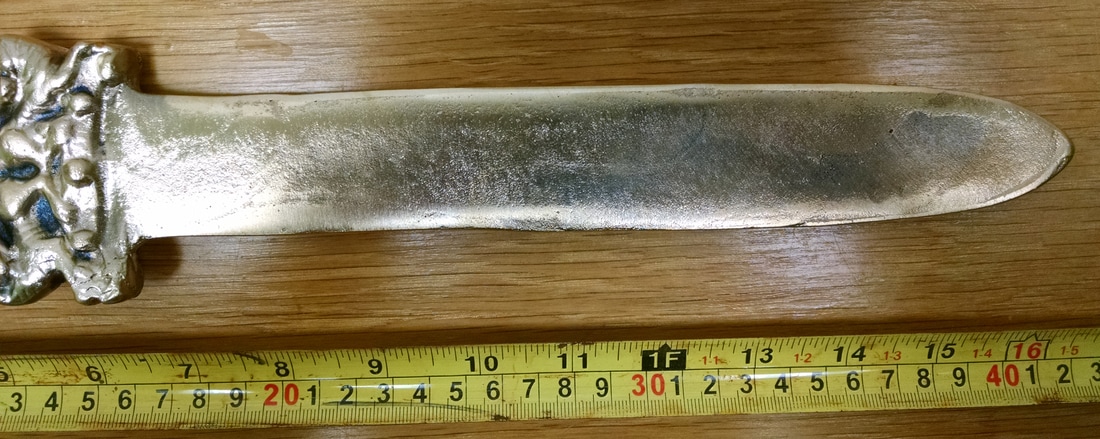
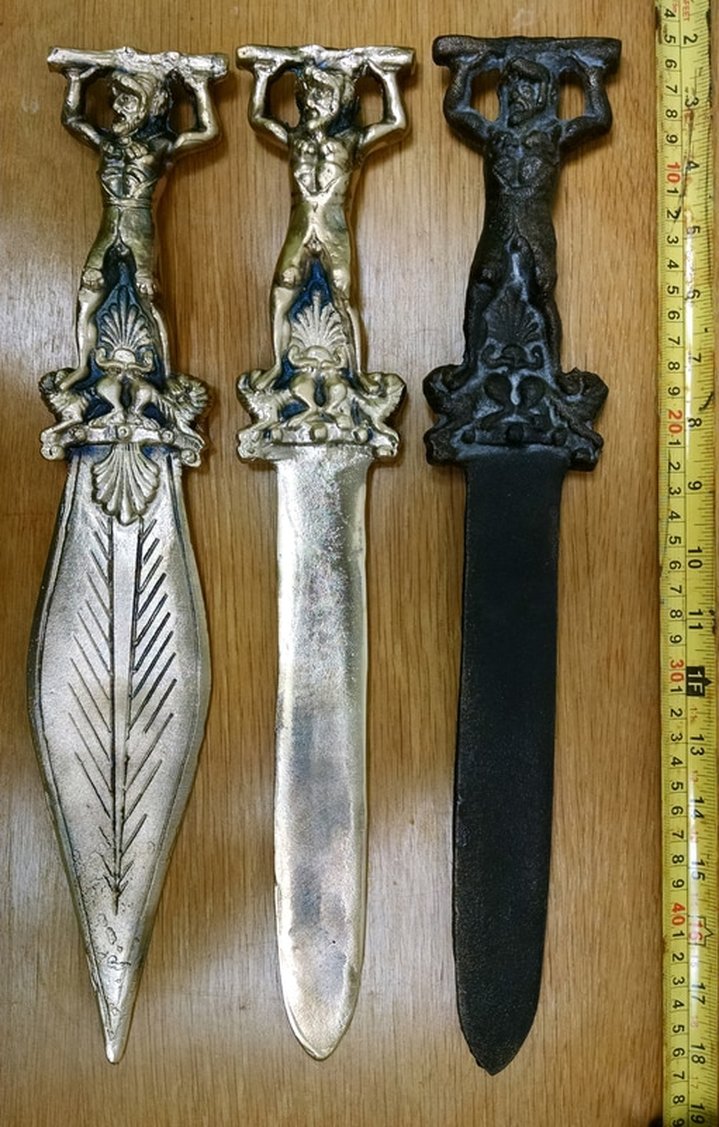
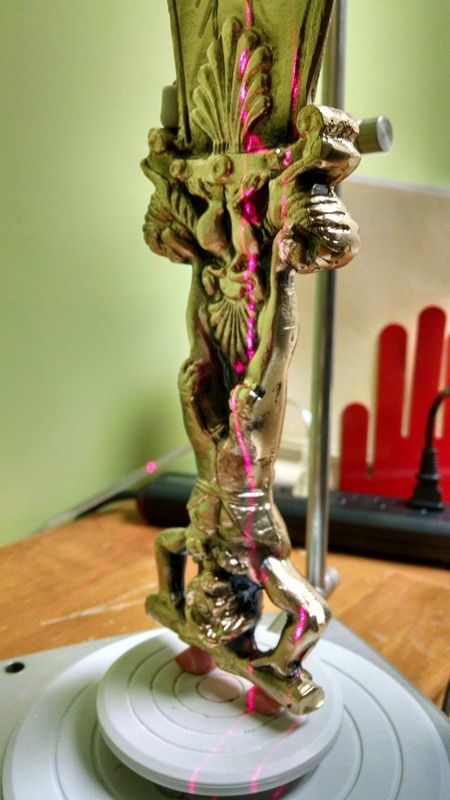


 RSS Feed
RSS Feed
